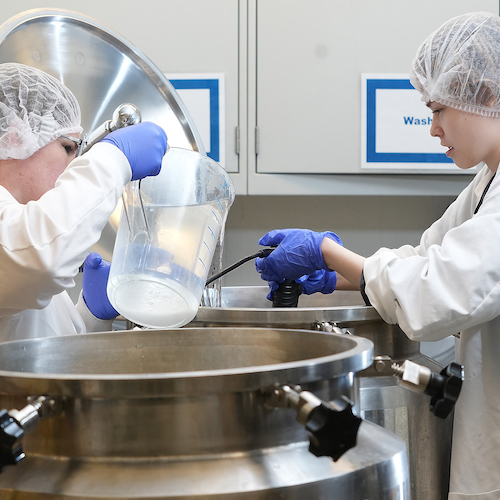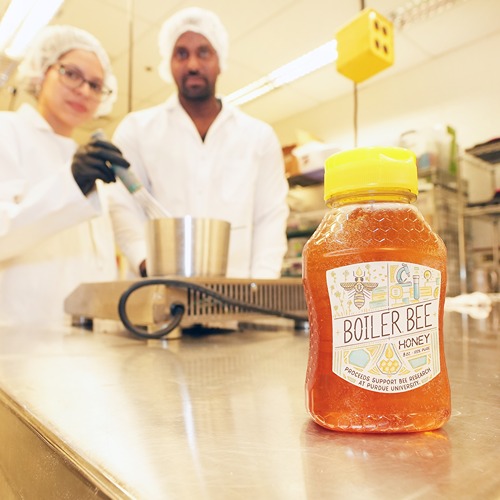Featured Stories

Homemade nut-based dairy analogs raise questions about bacterial risks
Many consumers know the food safety risks of dairy products, eggs and raw meat. But they are less...

CH4 Global partners with Food Entrepreneurship and Manufacturing Institute to combat methane emissions in the cattle industry
The Food Entrepreneurship and Manufacturing Institute (FEMI), housed within Purdue...

Purdue MANRRS receives chapter of the year award at national conference, making history
For the first time since its founding in 1990, the Purdue University College of...

The sweet (and spicy) taste of victory—National Honey Board funds a food science development competition at Purdue
In the past few years, specialty sauces like hot honey combined the classic warm, sweet feeling...

Survey tallies consumer attitudes toward lab-grown meat alternatives
Many consumers view conventional meats as both tastier and healthier than laboratory-grown...

Butcher Block adds eggs from chickens fed orange corn
The Boilermaker Butcher Block’s selections will now include farm fresh eggs laid by Purdue...